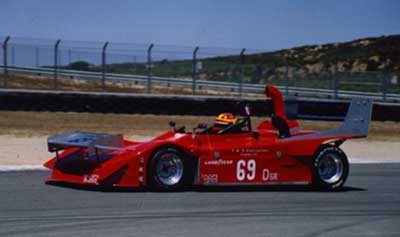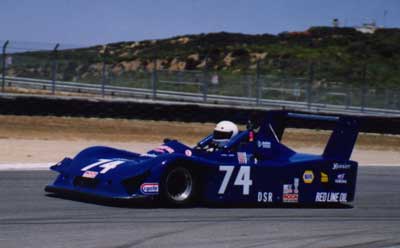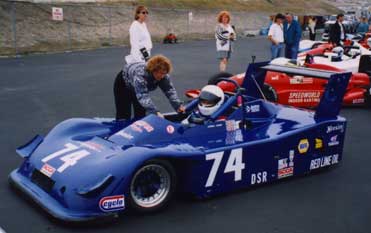INSIDE
RACING
T E C H N O L O G Y
DSR Page 2
DSR Page 3
IRT Home
News Page
Contents Page
Newsletter &
Books
email Paul
Engineering is Alive and Well in Club Racing
by Paul Haney

In the summer of 1998 I went to two SCCA races, one at Laguna
Seca and the other at Sears Point. Racecar Engineering magazine
wanted a technical article on U.S. club racing and D Sports Racing
seemed the perfect subject. I submitted that article to them
and they will publish it eventually. This version has similar
text but many more photos. It helps that I know some of the West
Coast participants. Most of the people mentioned in this article
are subscribers to my newsletter, TV MOTORSPORTS.
Ted and Nancy James are also friends. I met them almost 20 years
ago when I bought a Lotus Elan +2 and joined the Golden Gate
Lotus Club. At that time Ted and Nancy owned a Lotus Europa and
a BDA-engined Lotus 7. When I started submitting race reports
to The Wheel, the monthly publication of the San Francisco Region
of SCCA, I watched Ted and Nancy race at Sears and Laguna. During
that time I also met Lutrell Harms and was impressed with his
mechanical, fabrication, and driving skills.
U. S. Club Racing
Club Racing in the U.S. refers to amateur races sanctioned by the Sports Car Club of America, a national organization with 50,000 members. The SCCA administers rules covering more than 10,000 participants in 31 regional and 24 national classes including Street Stock, Improved Touring, Production (actually highly modified), open-wheeled, and sports racing categories. The SCCA sanctions regional and national races with the latter counting points toward eligibility for an end-of-season championship meet, referred to as The Runoffs, at the Mid-Ohio Sports Car Course.

D Sports Racing
DSR, one of the sports racing classes, features relatively
wide-open rules and allows a good deal of creativity and complexity.
The rules do not exclude the use of electronic engine management
and data acquisition systems, and this allows enhancements such
as active traction control, shift without lift, full fuel and
ignition mapping, and logging and analysis of a myriad of sensors.
Aerodynamics and suspension design is relatively open. 150 SCCA
members compete in DSR nationally and there are probably an additional
equal number of participants at the regional level.
The two D Sports Racing racecars presented here represent the
two ends of the scale of cost and complexity, but both are capable
of similar lap times. Lutrell Harms built, drives, and maintains
his car, the blue number 74, for a minimum of cash. On race weekends
Lutrell's wife, Terry, becomes his pit crew. Among West Coast
racers Lutrell is credited with reviving the class by showing
that a simple, fast, fun racecar can be built for around $10,000.

Ted James on the other hand revels in the use of technology and applies it generously to the red number 69. He begins with off-the-shelf components but modifies almost everything continually. Ted has his own engine dynamometer and a damper dyno as well. His wife, Nancy, is the driver. This couple started racing with a Lotus 67 Formula Ford in 1974 and has competed almost continually in various classes since. Nancy currently holds the DSR lap record at seven different tracks.
The Rules
Basically the DSR rules limit the car's overall height, width, and length and mandate DOHC engines of 1000cc maximum displacement or pushrod engines less than 1300cc. Rotary engines and turbochargers are allowed, but the rules require intake restrictor orifices. 2-cycle engines are allowed 850cc displacement. Cars using a motorcycle engine and chain drive have a minimum weight of 900 lbs. including the driver. Designs using automobile-based engines with transaxles must weight in over 1,000 lbs. Tires and wheels are free. Aerodynamically the car must have a flat bottom between the axle lines. Rear diffusers are not permitted. Wings are allowed front and rear.
Page 2